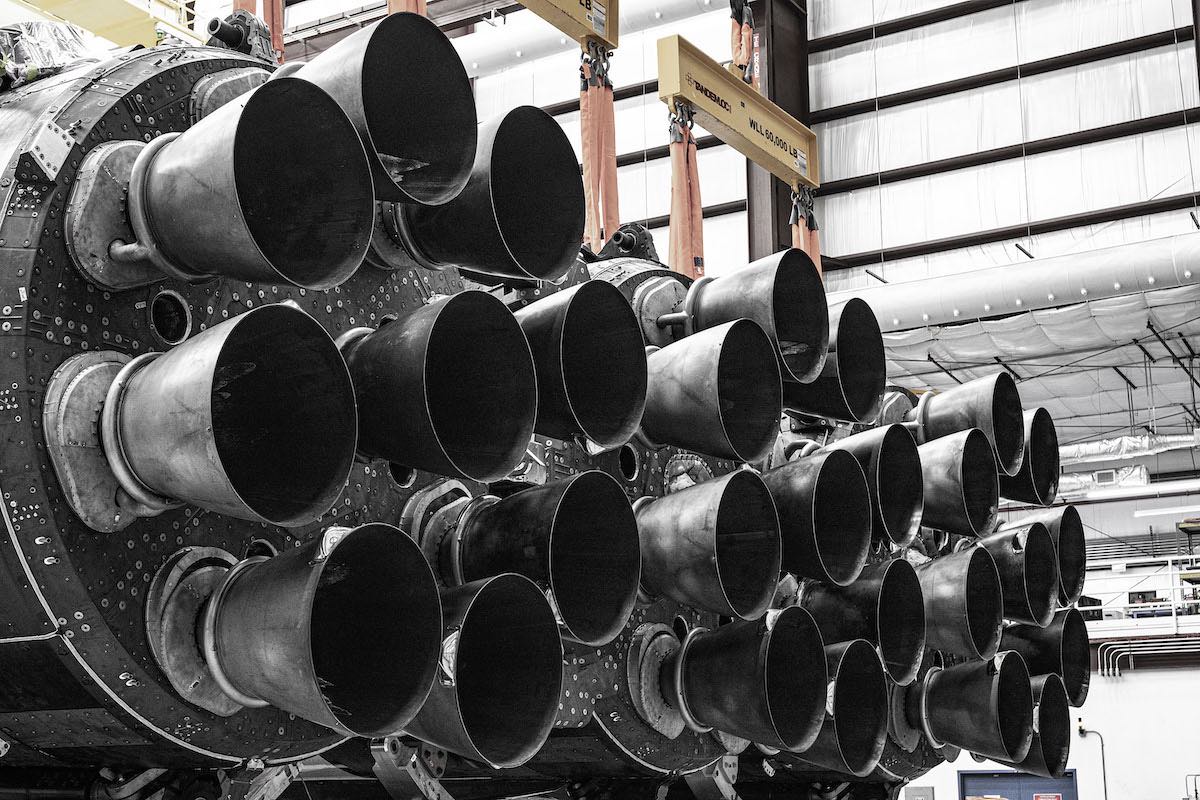
The first Falcon Heavy rocket flight since 2019 is scheduled Tuesday to kick off SpaceX’s longest-duration launch mission to date, a roughly six-hour climb into geosynchronous orbit more than 20,000 miles over the equator with a bundle of payloads for the U.S. Space Force. The powerful rocket’s two reusable side boosters will return to Cape Canaveral for landing.
The mission’s high-altitude target orbit means the Falcon Heavy’s upper stage will need to coast for some six hours through the Van Allen radiation belts before reigniting its engine and deploying the Space Force’s satellites.
The long-duration mission required SpaceX to make some changes to the Falcon Heavy rocket. The most visible modification is the addition of gray paint on the outside of the upper stage’s kerosene fuel tank, which will help ensure the fuel does not freeze as the rocket spends hours in the cold environment of space.
The launch, which the Space Force has designated USSF-44, will mark the fourth flight of SpaceX’s Falcon Heavy, the most powerful rocket currently flying. But it is the first Falcon Heavy mission since June 25, 2019, following a series of delays encountered by SpaceX’s customers.
The USSF-44 mission has been delayed about two years from the original schedule of late 2020. The Space Force blamed the delay on satellite-related problems.
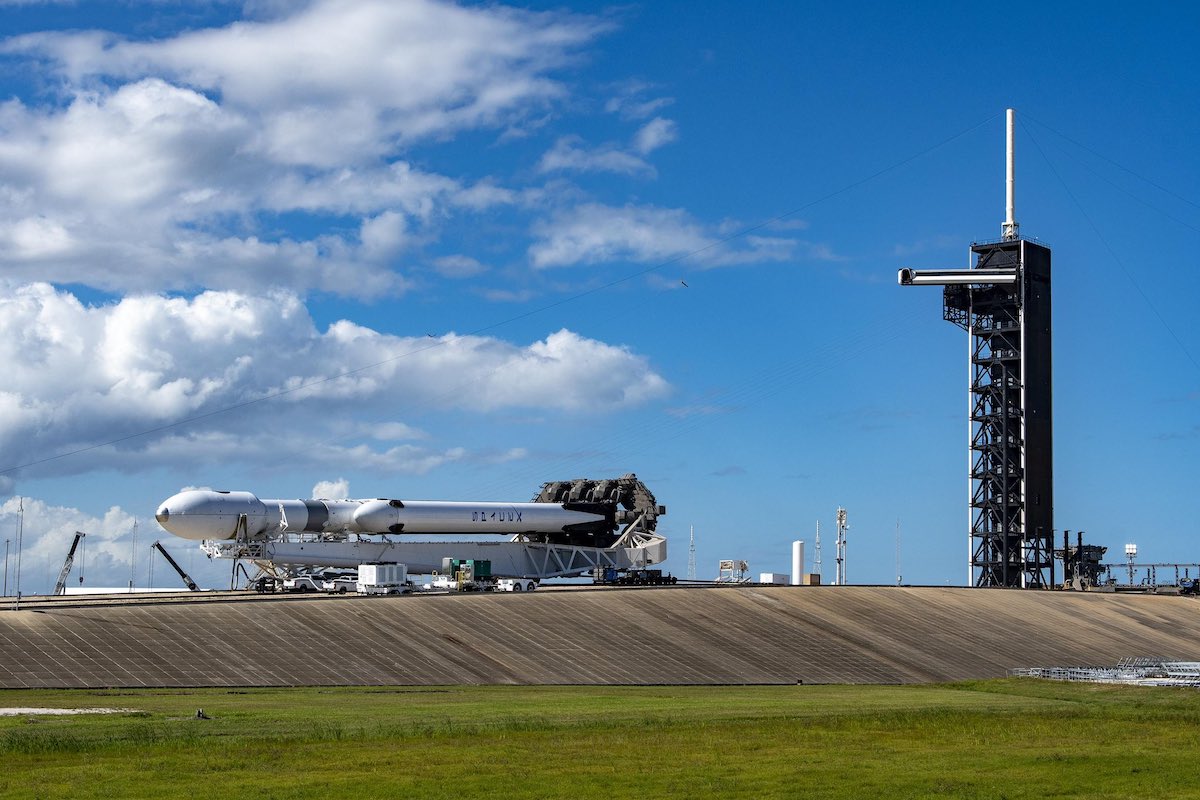
The launch will be the first fully operational national security mission to fly on SpaceX’s heavy-lifter. The Falcon Heavy’s most recent launch in June 2019 carried 24 experimental satellites for the military and NASA on the Space Test Program-2, or STP-2, mission. The STP-2 mission was billed as a demonstration flight of the rocket before future launches with more critical national security payloads.
“We’ve worked side-by-side with SpaceX to ensure the Falcon Heavy meets all our requirements and has a successful launch,” said Walt Lauderdale, the Space Force’s mission director for the USSF-44 launch. “This will be the first Falcon Heavy launch in over three years and we’re excited to get these payloads to space. This launch is an important milestone and continues a robust partnership that is cementing a capability that will serve the nation for years to come.”
“This launch culminates years of effort by a dedicated team comprised of mission-focused people from across the U.S. Space Force and SpaceX. The Falcon Heavy is an important element of our overall lift capability, and we’re very excited to be ready for launch,” said Brig. Gen. Stephen Purdy, the Space Force’s program executive officer for assured access to space.
The Space Force has released little information about the satellites launching on the Falcon Heavy rocket.
There are two payloads stacked on top of the other inside the Falcon Heavy’s nose cone. One is called the Shepherd Demonstration, and the other is the Space Force’s second Long Duration Propulsive ESPA, or LDPE 2, spacecraft, itself hosting six payloads — three that will remain attached to the spacecraft and three that will deploy from LPDE 2 to perform their own missions.
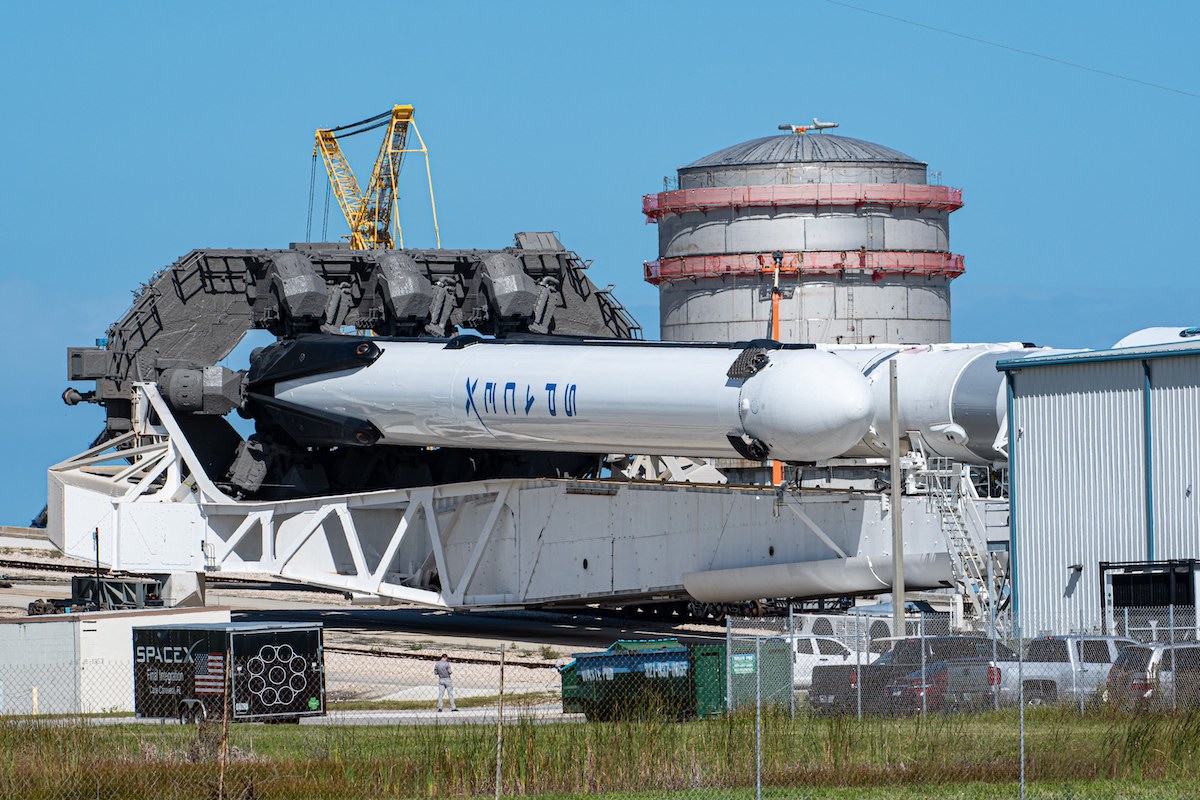
The fully assembled Falcon Heavy rocket rolled out to Launch Complex 39A at NASA’s Kennedy Space Center on Monday afternoon, riding a transporter the quarter-mile distance from the hangar to the launch pad. SpaceX teams planned to raise the Falcon Heavy vertical on pad 39A overnight in preparation for liftoff Tuesday during a 30-minute window opening at 9:41 a.m. EDT (1341 GMT).
Forecasters predict a 90% chance of good weather for launch Tuesday, with light winds and scattered clouds predicted. “The primary weather concern will be a rogue Atlantic shower or enhanced cumulus brushing the coast,” the Space Force’s 45th Weather Squadron wrote in an outlook issued Monday.
After receiving its supply of kerosene and liquid oxygen propellants, the Falcon Heavy’s three first stage boosters will fire their 27 main engines and throttle up to produce 5.1 million pounds of thrust, around twice the power of any other operational rocket in the world. The rocket will head due east from the launch site, arcing over the Atlantic Ocean before shedding its two side-mounted boosters two-and-a-half minutes into the flight.
The side boosters will pulse their cold gas thrusters and reignite three engines each to reverse course and begin returning to Cape Canaveral Space Force Station for landing at SpaceX’s two recovery zones about 9 miles (15 kilometers) south of pad 39A. The boosters will aim for near-simultaneous vertical landings less than 10 minutes after liftoff.
The core stage, which will throttle back its engines for the first phase of the flight, will fire longer before jettisoning to fall into the Atlantic. It will not be recovered on the USSF-44 mission. An upper stage engine will finish the task of placing the USSF-44 payloads into an equator-hugging geosynchronous orbit some 22,000 miles (36,000 kilometers) above Earth.
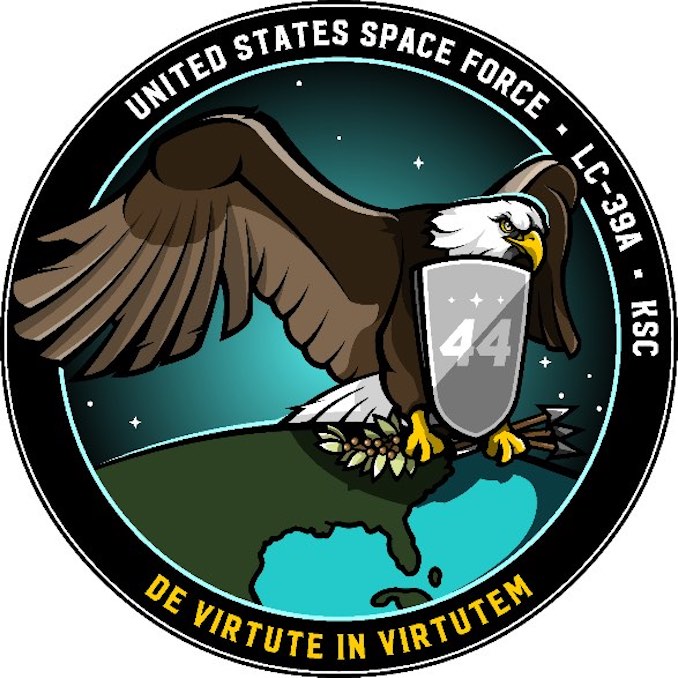
The rocket will release the LDPE 2 and Shepherd Demonstration satellites into orbit to conclude the Falcon Heavy launch sequence. The satellites will orbit will orbit in lock-step with Earth’s rotation, a feature that makes geosynchronous orbit a popular location for military communications, early warning, and reconnaissance satellites.
Most satellites heading to geosynchronous orbit get dropped off by their launcher in an egg-shaped transfer orbit. That requires the spacecraft to use its own propulsion resources to circularize at an operational altitude over the equator.
Some launches deploy their satellites directly into geosynchronous orbit. The Atlas 5 and Delta 4 rockets built by United Launch Alliance, a SpaceX rival in the U.S. launch industry, have accomplished this feat before. But the launch Tuesday will be SpaceX’s first attempt to place payloads directly into geosynchronous orbit.
SpaceX tested its long duration coast capability on previous flights, including the Falcon Heavy launch on the STP-2 mission in 2019, which lasted three-and-a-half hours from liftoff through the final burn of the upper stage stage engine. In December 2019, SpaceX performed a long duration six-hour coast experiment on a Falcon 9 rocket upper stage following launch of a resupply mission to the International Space Station.
The Shepherd Demonstration satellite on the USSF-44 mission “hosts payloads that mature technologies and accelerate risk reduction efforts to inform programs of record,” the Space Force said. A military spokesperson said the Shepherd Demonstration satellite carries multiple Space Force payloads, and is based on an “ESPA ring,” a circular structure with attachment ports for experiments and instruments.
The Space Force spokesperson declined to provide additional details on the Shepherd Demonstration mission in response to questions from Spaceflight Now.
The LDPE 2 spacecraft was built by Northrop Grumman, and is similar to the LDPE 1 satellite launched in December 2021 on a ULA Atlas 5 rocket. LDPE 2 hosts six payloads on circumferential ports, apparently similar to the design of the Shepherd Demonstration spacecraft, and has its own propulsion system to maneuver in space. The spacecraft is capable of releasing small satellites into orbit, and a Space Force spokesperson confirmed to Spaceflight Now that three of the LDPE 2 payloads will separate as free flyers in geosynchronous orbit.
One of the small “subsatellites” riding on LDPE 2 is believed to be Tetra 1, a small microsatellite built by Millennium Space Systems, a Boeing subsidiary. Military officials said in a 2020 statement that the Tetra 1 satellite was assigned to launch on the USSF-44 mission, and is designed to “prototype missions and tactics, techniques and procedures in and around geosynchronous Earth orbit.”
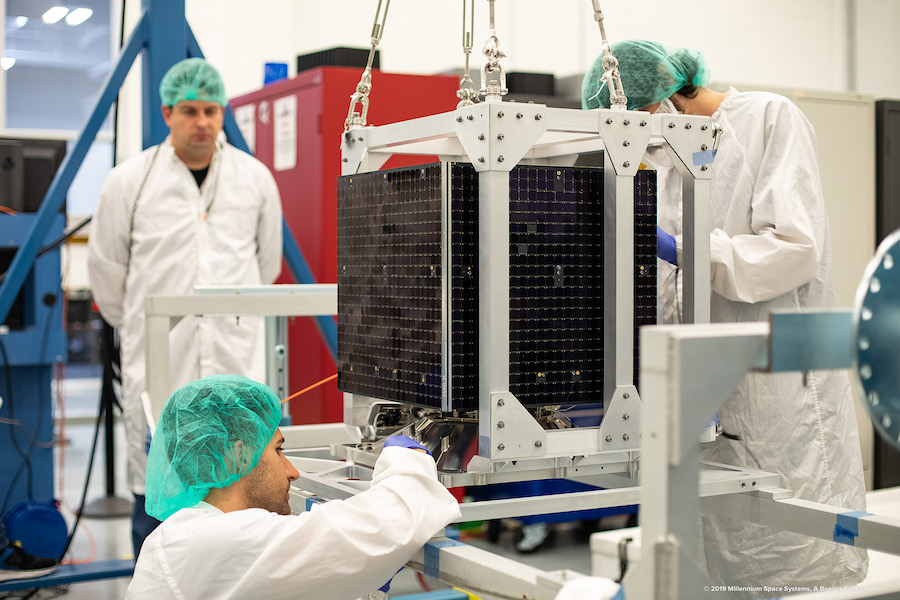
The LDPE 2 host spacecraft may also carry two Lockheed Martin CubeSats on a demonstration mission to test maneuvering and navigation capabilities for future small satellites in geosynchronous orbit. The two LINUSS smallsats — short for Lockheed Martin In-space Upgrade Satellite System — were assigned to fly on the USSF-44 mission as of early 2021, according to an orbital debris assessment report published on the Federal Communications Commission’s website.
The LINUSS A1 and A2 satellites, owned by Lockheed Martin and built by Tyvak Nano-Satellite Systems, are designed to separate from the LDPE 2 spacecraft about two months after launch, then perform maneuvers using their miniature propulsion systems. After separating to a distance of several hundred miles from one another, one of the satellites will approach its companion to a range of just 160 feet (about 50 meters).
The demonstrations will test capabilities that could be used in future satellite servicing missions, or on inspector spacecraft that could approach other objects in orbit. The LINUSS mission will also demonstrate on-board high-performance image processing, smallsat propulsion, inertial measurement units, machine vision, 3D-printed components, and reconfigurable flight software, Lockheed Martin said. The company said it developed the LINUSS mission using internal funding.
The LINUSS CubeSats are about 8 inches by 8 inches by 12 inches, and weigh about 47 pounds (21.5 kilograms) at launch.
Spaceflight Now asked the Space Force last week if the Tetra 1 spacecraft and the two LINUSS satellites remain on the USSF-44 mission, and whether they account for the three payloads that will separate from the LDPE 2 spacecraft. A Space Force spokesperson declined to confirm whether the three satellites are still assigned to the USSF-44 launch.
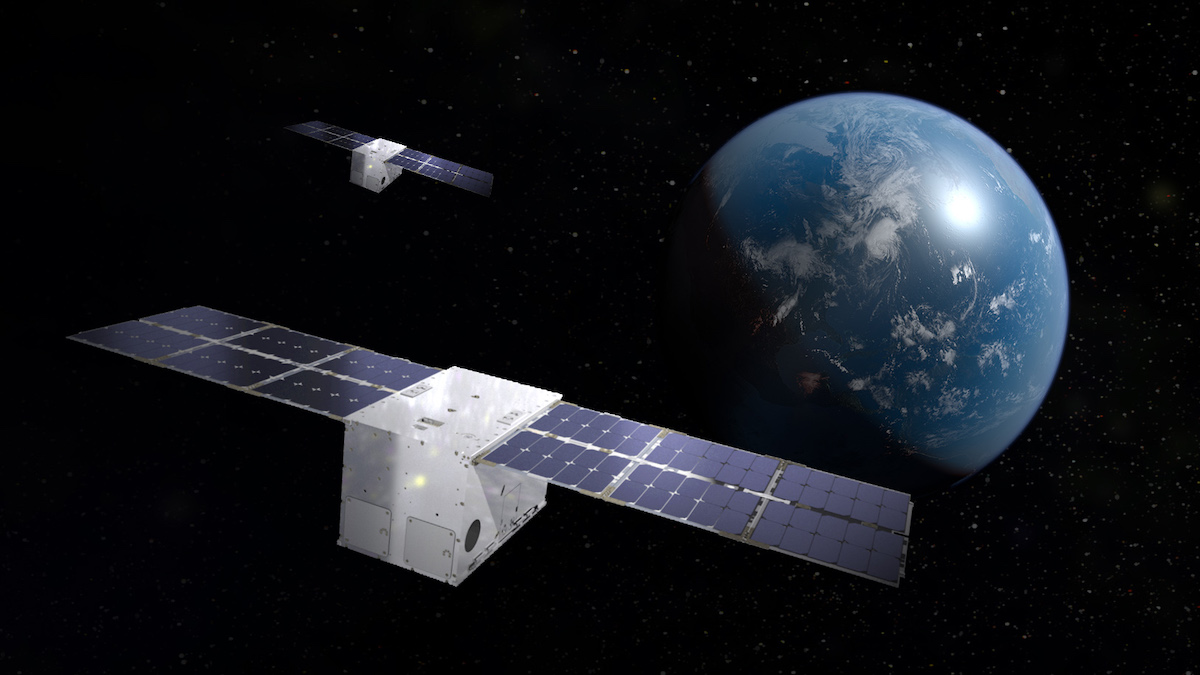
The Space Force says the LDPE program allows the military to more affordably send small and secondary payloads into geosynchronous orbit, helping accelerate the service’s “pivot to new, more resilient space architectures.”
“This capability has broad potential to fill capability gaps in our space systems architecture and provide helpful services for our mission partners with frequent and low-cost access to orbit,” said Brig. Gen. Tim Sejba, Space System’s Command’s program executive officer for space domain awareness and combat power.
“LDPE 2 hosts a variety of payloads that advance technology concerning communications and space weather sensing,” a Space Force spokesperson said.
The next military mission to fly on a Falcon Heavy rocket, named USSF-67, will launch the LDPE 3 spacecraft and a Space Force communications satellite in tandem. That launch is scheduled for January, and will use the same Falcon Heavy side boosters flown on the USSF-44 mission, assuming a successful recovery on the landing zones at Cape Canaveral Space Force Station, the Space Force said.
Email the author.
Follow Stephen Clark on Twitter: @StephenClark1.
